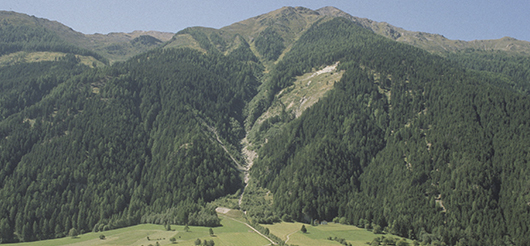What are mountain forests?
Mountain forests can be defined as forests on land with an elevation of 2 500 m above sea level or higher, irrespective of slope, or on land with an elevation of 300–2 500 m and a slope with sharp changes in elevation within a short distance.
Mountain forests cover about 900 million hectares of the world’s land surface, constituting 20 percent of the world’s forest cover. They are hotspots of biodiversity and provide important environmental services far beyond the mountains themselves. Mountain forests exist on every continent (except Antarctica) and in every climatic zone. Mountain forests cover large proportions of (for example) the Alps, Pyrenees and Balkan and Carpathian mountain ranges in Europe, the Appalachian and Rocky mountain ranges in North America, the Australian Alps, the Guiana Highlands in South America, the mountains in Central Africa, and the Andes Mountain Range in South and Central America.
Why do they need particular attention?
Mountain forests are fragile ecosystems because of their steep slopes and often-extreme climates and weather events. Mountain forest management should aim to prevent forest overuse and degradation because this can lead to environmental problems such as soil erosion, landslides, rockfalls, increased water runoff or reduced water storage, the drying of springs and the loss of biodiversity, and it can have severe impacts on livelihoods and even cause human deaths. Special planning and adequate measures to secure the productive, protective, social and cultural functions of mountain forests may be required.
Key aspects for mountain foresters: planning and monitoring
Land-use planning needs to take into account the higher risk environment presented by mountains. Mountain forest zoning should identify areas that are especially important for certain forest functions, such as protection from hazards, nature conservation, water management, forest pastures and wood production. The purpose, type and impact of any intervention in mountain forests require careful consideration. Factors that need to be taken into account include terrain, site and environmental parameters (e.g. temperature range, precipitation, steepness, soil condition, watercourses, and exposure to the sun); accessibility; silviculture (e.g. tree species composition, increment and regeneration requirements); and biodiversity (e.g. endangered species). Forests should be monitored for the early detection of change.
Particular consideration should be given to:
- forests that protect assets from natural hazards;
- forest harvesting and regeneration in mountains; and
- mountain forests and adaptation to climate change.



